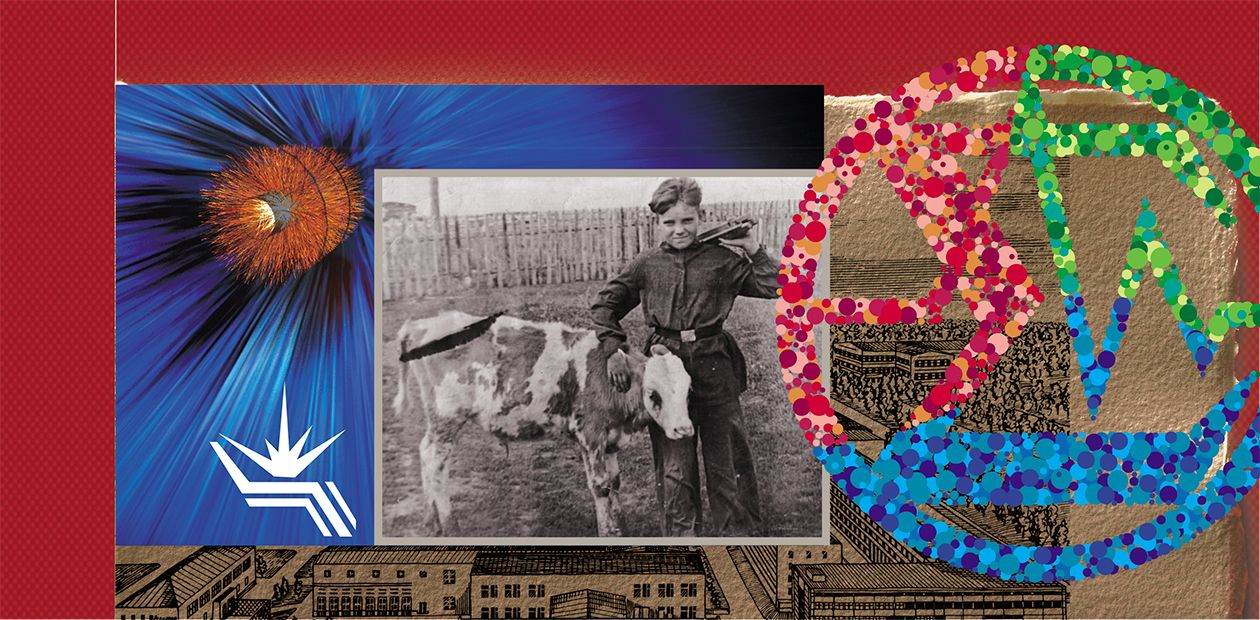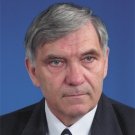Here Dreams Came True
The beginning of construction of Novosibirsk Akademgorodok coincided with a period of renewal in our country. World War II was just over, followed by a revival of freedom and initiative—we moved into the unforgettable 1960s. One could sense renewal everywhere: in art, literature, science. Obviously, it was a perfect time to build a science town in Siberia—if not now, when then? Perhaps, if it had been a different time, Akademgorodok would not have appeared at all, or it would have been totally different. In those years, many scientists grasped on an opportunity to move from Moscow to Siberia, sensing it as salvation—in Moscow, authorities would always want to clip their wings. One can hardly imagine that Andrei Mikhailovich* Budker, the first director of the Institute of Nuclear Physics in Akademgorodok, could have implemented his “crazy” projects in Moscow on such a broad scale
I first came to Akademgorodok when I was a schoolboy. Together with my friend Vovka Balakin (a future Corresponding Member of the Russian Academy of Sciences), we went to the first Summer School in Physics and Mathematics. We rode by train from the village of Rodino in the Altai Krai. It was the first time we had ever traveled on our own, so we decided to get everything that we could out of that journey: we even took a ride on a car deck. Our faces were black from mazut, but we reached our destination safely. We arrived at Novosibirsk Railway Station late in the evening and decided to sleep on a bench and then, in the morning, go to the Presidium of the Siberian Branch of the USSR Academy of Science, which then resided at the center of Novosibirsk, at 20 Sovetskaya Street. A local militiaman roused us from sleep: he thought he stumbled into a pair of street urchins, but they were, as it turned out, “future scientists.” We showed him our invitations from the SB USSR AS, signed by Budker and Lyapunov themselves, and he even let us inside his booth, to keep warm.
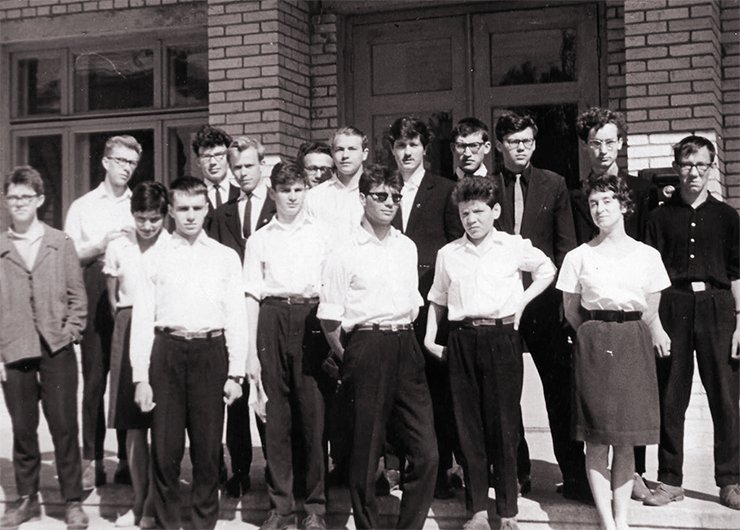
I fell in love with physics when I went to school in my home village. We had a brilliant teacher Konstantin Krivenko: he was passionate about his subject and roused this passion in us too. He also ran a children's radio engineering club, where we crafted transmitters and receivers like professionals. We even could talk over radios, like modern mobile phones, and we were very proud of it.
So, it isn't surprising that I got interested in the problem assignment of the All-Siberian Academic Olympics in Physics and Mathematics, about which I learned from a newspaper. I read the task description, solved the problems and mailed my answers. Soon I received an invitation to the next, written phase of the competition in the city of Barnaul. The main organizer at this phase was Dmitry Shirkov, a physicist who worked at the Institute of Mathematics in Novosibirsk Akademgorodok. I did well on the task and got an invitation to the first summer school. However, one episode spoiled this happy moment: Shirkov told me they would cover my travel costs should I have money issues. I took it as an offense and asked why he thought I was poor. In reply I heard, “Well, it's your trousers and boots…” He got confused over my looks, and I thought I was most fashionably dressed.
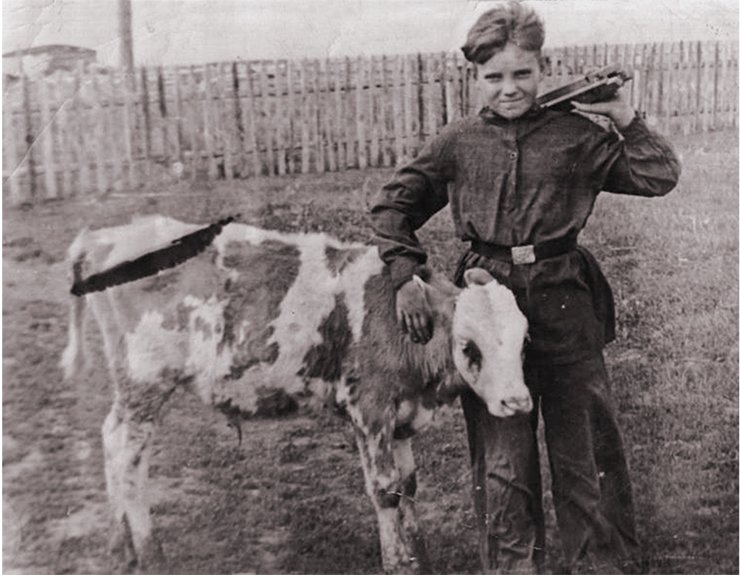
Our teachers at that summer school were Budker and Lyapunov themselves – seriously-looking, long-bearded professors. Back then, I could hardly imagine why these prominent scientists would waste their time time teaching us. Looking back now, I understand that they didn't know how to teach by the rules of pedagogy – they were themselves learning how to teach. So, the teachers and students “went to school” together, and it was one of the greatest cooperative projects in my entire life. Moreover, it was an opportunity to be part of the brilliant science development program implemented by Mikhail Lavrentiev and his colleagues. We, village kids, suddenly became a part of a great cause.
A few years ago, authorities almost closed the High School of Physics and Mathematics (HSPM) because most of the teachers on staff had no degree in pedagogy. When we went to this school, no one even thought about that, and still we got the best education in the world. The people who taught us weren't privy to modern teaching methods, but they had so much passion for science that they passed it on to us. Moreover, everyone who lived and worked in Akademgorodok tried, one way or another, to engage in science. One day, our janitor came up to me after the lecture and asked me what we were discussing. We were so proud that we were doing unusual things, things that most people knew nothing about, that we would always talk eagerly about physics.
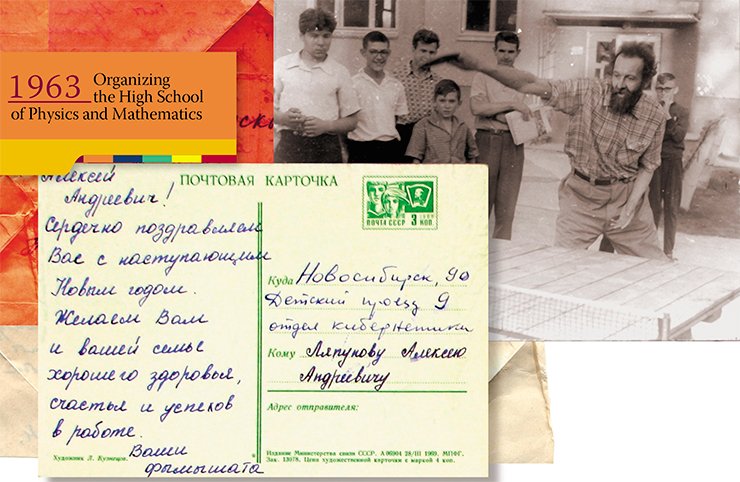
Lyapunov's words were always consistent with his deeds. He became one of the “founding fathers” of the country's first specialized boarding school with concentration in physics and mathematics, which was organized in 1962 as part of Novosibirsk State University. He was the first chairman of the school's Scientific Council and a passionate lecturer. He also was among the organizers of the All-Siberian Academic Olympics in Mathematics and the Summer Schools in Physics and Mathematics in Akademgorodok.
So, the summer went by, and we went back to our homes: the order to organize the HSPM hadn't passed through yet. In half a year, I received a letter of invitation to Novosibirsk. I didn't have a single doubt that I should go.
At that time, Akademgorodok looked like a giant construction site: there weren't any streets yet, and houses were only beginning to appear. The school didn't even have a building of its own, but we had absolutely no worries that something might go wrong. Our teachers were most outstanding scientists: Budker, Lyapunov, Rumer… We had lectures in open air at the NSU fountain and took part in experiments organized by research institutes (for instance, in an experiment to produce fireballs, which was held at the Institute of Hydrodynamics by Bogdan Voitsekhovsky). We fought with post-graduate students – threw sneakers at them from balconies using large DYI slingshots.
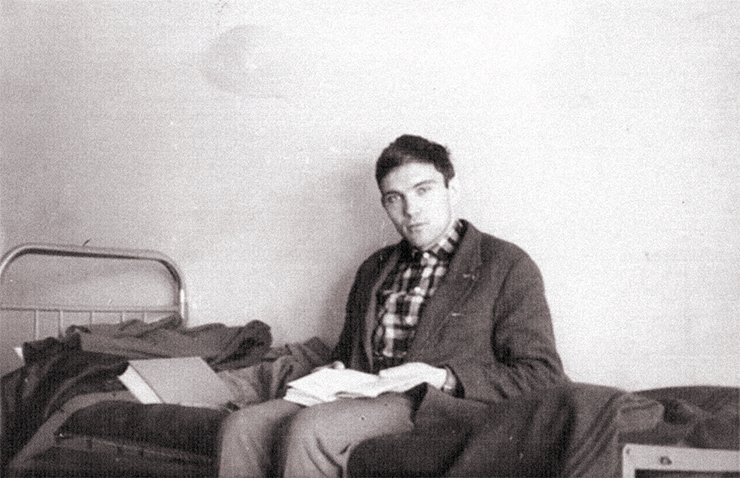
The construction of Akademgorodok went on; new people were coming. Many scientists saw it as a chance to break away from the grip of Moscow, where authorities must have controlled them more tightly. Back then, I had little understanding of such things, but now I know the value of creative freedom for a scientist. In Akademgorodok, where dreams to do science freely came true, this spirit of independence became a propulsive force of scientific development.
Fourteen Russians and one American
As fate would have it, I've focused on the method of electron cooling throughout my scientific career. It was Budker himself who set me on this track. However, it took me some time to join in this project, also inspired by Budker. At first I worked in a different laboratory; then I even left for Irkutsk, to a new developing science center, to take a look. When I came back, Andrei Mikhailovich called me to his office. Barely had I stepped in when he blurted out, “Vasily, you've got nothing to do at our institute?”
EXPERIMENTS WITH LOCOMOTIVESHalf a century has passed since I heard about the colliding beams from G. I. Budker during his lecture at the fountain during the first summer school for academic competition winners among schoolchildren. At that time, in 1962, G. I. Budker was very enthusiastic and told us about the method of collisions of the opposing proton or electron beams, aimed at studying their structure. To simplify the story for schoolchildren, he compared particles with locomotives rushing toward each other almost with the velocity of light. After such a strong collision, all internal elements of particles (locomotives) fly apart, and it becomes possible to consider them individually.
Even at that time, the capabilities of accelerators of elementary particles were so high that the effective mass of accelerated electrons increased by a factor of thousands in accordance with the relativity theory, and it was clear that the collisions of rapidly moving “heavy” electrons with “light” electrons of the motionless target were much less effective than the opposing collisions of high-energy “heavy” particles.
Like any boy, I thought that such experiments with “locomotives” looked funny, so I got into physics and stayed there for the rest of my life.
It seems that at that point, Budker had already decided my fate. Of course, I didn't even think about Irkutsk after that conversation. Andrei Mikhailovich knew how to recruit people – today, one would call him an excellent headhunter. Indeed, he was one. At the same time, Budker was a very emotional person and his way of talking sometimes got him in trouble. However, when he channeled his temperament into the right area (which he mostly did), good things happened.
The ability to obtain funding and find the right people so as to put the entire intricate mechanism of scientific experiment into action and ultimately succeed – Andrei Mihailovich Budker possessed all that. You know, if your soul (or whatever we have inside) doesn't burn, you won't get things going. Budker succeeded in everything he set his mind to despite the mistrustful world that said, “We don’t believe it,” to his every idea. However, the very idea of science is to venture into the unknown and to do the impossible.
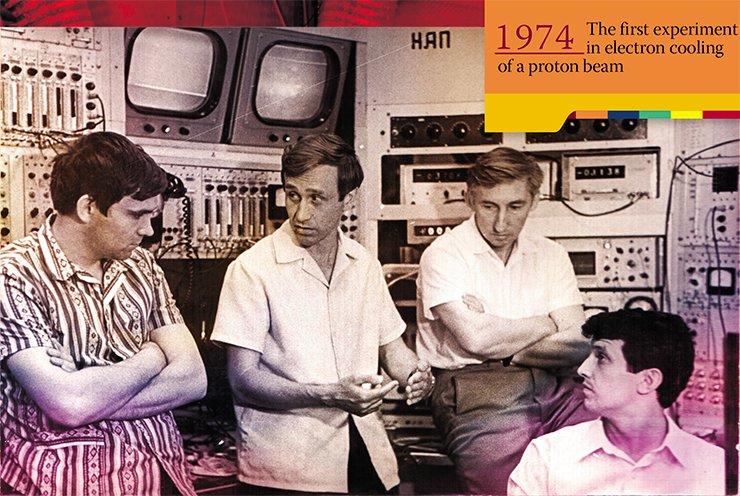
The development of the electron-electron and electron-positron colliders proves this point. And so does electron cooling. Not all of these ideas belonged to Budker himself, but no one else in the world, except him, dared to put them to practice. He had no fear, and he succeeded.
One of his ideas was to build a proton-antiproton facility in Siberia, but he couldn’t implement this project for economic reasons. However, our students (S. S. Nagaitsev, A. V. Burov, and A. V. Shemyakin), who moved to the United States during the hard times for Russian science, were able to put this idea to life. In the earliest stage of the construction, I came to the United States as a consultant. Fifteen people sat around a big table, and all of them, except one, were from Russia. Why was that? Because the scientific school itself had formed at the Institute of Nuclear Physics; nowhere else in the world people did those things.
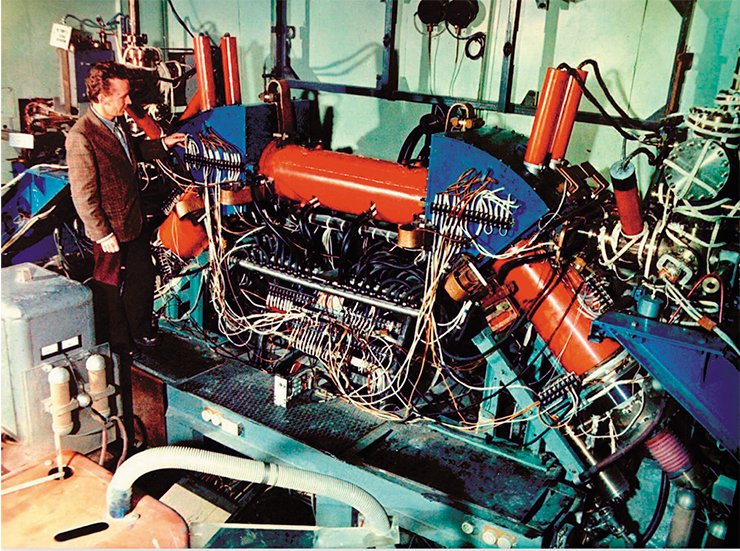
Young scientists usually choose their field of scientific interest with a helping hand from their scientific supervisor. Here, it is not only the novelty of the subject that matters but also the teacher’s charisma. Budker always emphasized the great responsibility of those who raise the new generation of scientists; he urged them to be honest and forward-looking because their inner integrity would determine the fate of the young scientist. He saw the power of science in the development of strong scientific schools.
I first heard about electron cooling from Budker when I was a student – he told us about this method at his lectures. It was a new, unchartered area. I participated in the design and construction of an electron cooling facility from the very beginning.
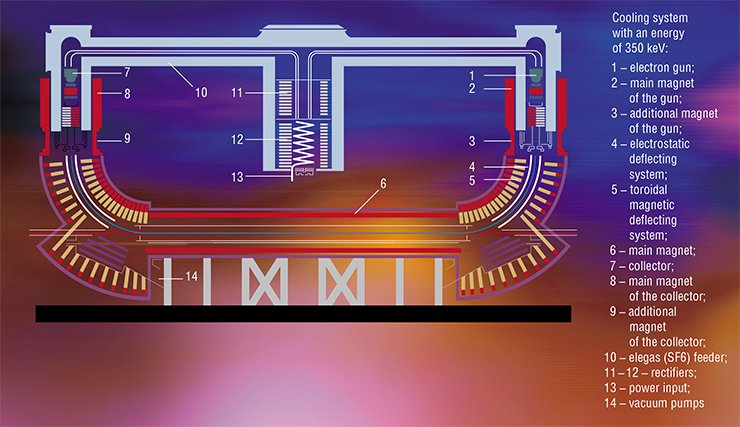
It is known that electrons and positrons moving with acceleration (e. g., along a circular trajectory, as it happens in ring accelerators) emit electromagnetic radiation (the so-called synchrotron radiation), which makes them lose a large fraction of their energy, resulting in a rapid natural cooling of the electron beam and, correspondingly, in beam compression. This cooling technique could not be used for heavier particles (protons and ions) because synchrotron radiation becomes sufficiently intense only at particle motion energies of tens of teraelectron-volts, which could not be provided in the 1960s.
The essence of the cooling method proposed by G. I. Budker was based on the idea that the proton beam and electron beam moving next to each other with almost identical velocities start to interact by means of electromagnetic forces. Owing to this interaction, their temperatures become equalized, i. e., the energy of thermal motion is transferred from the proton beam to the colder electron beam. As the proton mass is greater than the electron mass almost by a factor of 2000, the velocity of thermal motion of the proton beam and, correspondingly, its angular scattering are much smaller than those of the electron beam.
This was a complicated problem, in terms of both science and engineering. The fact that this problem could be solved was not as obvious at that time as it is now, several decades later. For this reason, probably, nobody in the world was so courageous as to start these activities. It was only owing to the intuition of the older generation of scientists and enthusiasm of the younger researchers of the Institute of Nuclear Physics that many problems of design of an operational setup were solved and we finally succeeded.
The team involved in the development of this method included many researchers who were already famous at that time: Academician G. I. Budker, Academician A. N. Skrinsky, senior researcher Ya.S. Derbenev, Head of Laboratory N. S. Dikanskii, senior researcher I. N. Meshkov, researcher D. V. Pestrikov, Head of Laboratory R. A. Salimov, and researcher B. N. Sukhina.
This important scientific achievement was highly appreciated by the Russian and foreign academic community. To verify the method, it was decided to construct a full-scale model of an antiproton accumulator (with the ring perimeter of 47 m) and perform experiments on electron cooling.
We started to put this idea into practice in 1971. We designed and fabricated the setup in the workshops of the institute and experimentally checked the elements of the pioneering accelerator with electron cooling. Using a special testbench, we generated an electron beam and studied its properties: density, charge, temperature, and all other factors that could affect the cooling process.
After all elements of the setup were assembled, we started our attempts to obtain cooling, which were not successful for the first several months for various reasons: first, because the vacuum was not sufficiently deep; then because of problems with oscillations in our electron circuits. It was only our enthusiasm, faith to the idea, and whole-hearted desire “to make a flea wear a horseshoe,” i. e., to achieve proton beam cooling, that allowed us to overcome the various problems that we faced.
Once, when the internal ion pump was accidentally switched off, we suddenly saw that the beam lifetime increased, and I immediately recalled our experiments with the measurements of the electron beam field by using a sphere suspended on a filament. It turned out that the hot ions from the pump charged the electron beam, and the high value of the electric field “kicked out” protons from the accelerator instead of cooling them. Soon after that we modified the evacuation system and were happy to see that we did obtain cooling.
Thus, the Antiproton Accumulator NAP-M (M stands for model) was commissioned in 1974, and the first results on electron cooling were obtained.
We were building that facility for years. The construction went on, but not a single publication appeared. In other words, we made hardware, assembled it, did the testing, then reassembled, but we did not obtain any scientific results. Today, one would hardly let us finish this work: modern scientists get funding on a project basis and must report on their progress with published results. Back then, I also felt utterly discouraged and went for advice to Stanislav Popov, the academic secretary of the institute. He told me, “Vasily, don’t worry, once you deliver electron cooling, you’ll get a swarm of papers – get down to work.”
So, the first thing was to breathe life into the facility. Here Budker helped us as well. He totally supported the idea and, where necessary, backed us with his authority. Of course, no one would take a post-graduate student seriously, but they would listen to Budker. Apart from authority, he also had a gut feeling for success, and succeed he did.
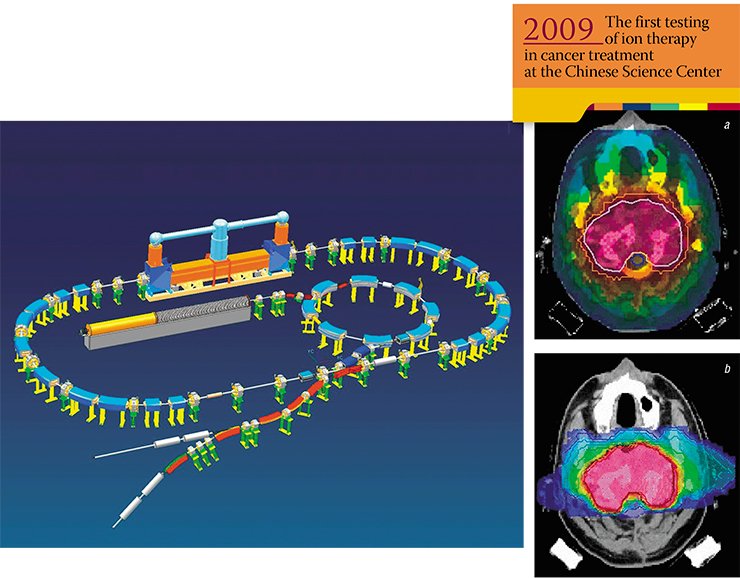
Electron cooling in one of the few examples of a Russian invention developed within the country to such a level that these works are still in demand. We can be proud of that: within several decades, we moved forward in scientific research and solved extremely complicated engineering problems, which allowed us to make the next step in the field of physics of elementary particles. But application of the electron cooling method was successful not only in the physics of elementary particles. Extremely interesting results were obtained by this method in medicine, namely, in oncology.
In conventional X-ray therapy, the maximum radiation level is reached when the beam enters the patient’s body, but it noticeably decreases as the beam moves toward the tumor. To compensate for this effect, the patient is irradiated from different sides; as a result, the tumor obtains the maximum amount of radiation, whereas health tissues are irradiated to a level below the dangerous limit, though this level is rather high as well.
If a high-energy ion beam is used, the situation is different. As the beam is decelerated in the patient’s body, ionization is enhanced, and the maximum effect is observed in the tumor region. Owing to electron cooling, the size of the ion beam is small, and the beam can be easily focused and directed from various locations to the cancerous region. This procedure offers a possibility of concentrating high-density radiation only in the neoplasm and minimizing radiation in healthy tissues.
Experiments on treating patients with cancer by this method are performed at the Chinese Institute of Modern Physic (IMP, Lanzhou, China) on a large experimental ion setup with two systems of electron cooling designed and fabricated at BINP SB RAS. During the time of operation of this setup, hundreds of people have received a chance to extend their lives. The results of this treatment look very promising, and IMP launches a project of a specialized center for treating patients based on this method.
The first successful experiments in electron cooling triggered a series of dissertations. Mine even had the title “The First Experiments in Electron Cooling.” Budker was happy, but the rest of the world remained mistrustful. American scientists and journalists who came to the institute wrote that it might have been a hoax and, if it wasn’t, then we had made an immense achievement.
The world didn’t trust us also because, in a sense, we managed to rebut Budker himself. In his model, we could only cool electrons down to 1000 °C. Instead, we showed that the beam cools down to 1 K. The reason we could do it was the quality of our magnetic field. In our experiments, we sent electrons through a perfectly homogeneous magnetic field, which allowed them to cool so well. In the West, however, they didn’t pay attention to this subtlety, and their magnetic field was so bumpy that the electrons acquired additional temperature. That is why they couldn’t reproduce our results.
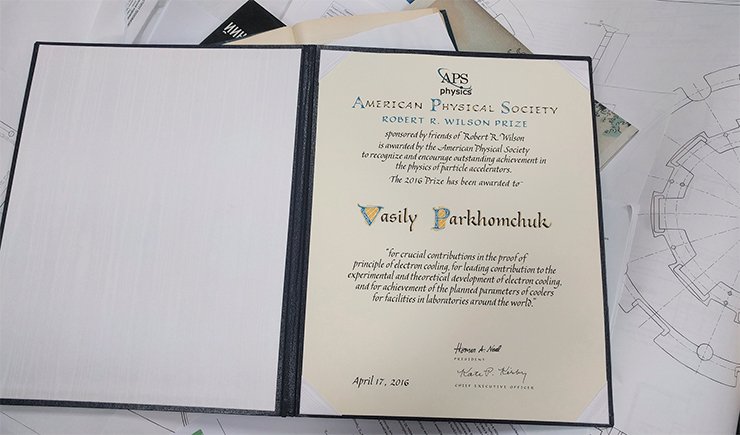
The international Robert R. Wilson Prize, established in memory of the founder of the famous American accelerator laboratory Fermilab, is awarded annually for outstanding achievement in the physics of particle accelerators. So far, only two Russian physicists have received this award, and both of them work at the Institute of Nuclear Physics SB RAS. In 2002, the prize was awarded to Alexander Skrinsky, Dr. Sci. (Phys. – Math.), Full Member of the Russian Academy of Sciences
It is this subtlety – the ability to create a homogeneous magnetic field – that made BINP the world leader in magnetic electron cooling, and so far we’ve kept our leading position. Apart from us, no one in the world can build these facilities. There is a joke: Whatever Russians do they make a Kalashnikov rifle, because no one else can do it better. Our facilities are now working everywhere in the world: in Germany, China, Switzerland, at the Large Hadron Collider… The Chinese use our facilities to cure cancer: the cooling makes the beam so fine and precise that it easily hits the right spot without damaging the healthy tissue.
We sent the first such facility with a perfect magnetic field to Germany in 1996, and we made one for Russian science as late as in 2017. Two large coolers will be working in the NICA project in Dubna. We have already delivered one of the facilities; the other one will be ready by 2023. It’s a long shot, but we are building a big facility, and we need time to make it.
Many years had passed from the birth of the electron cooling idea to its implementation in our country, but it was a happy story. Now I understand my mother who wept when she sent me away to Novosibirsk to the High School of Physics and Mathematics. I had the same feeling when I sent our facility to Dubna, it way like saying good-bye to my own child. And this is true.
References
Budker G. I. An effective method of damping particle oscillations in proton and antiproton storage rings // Soviet Atomic Energy, May 1967, V. 22. N. 5. P. 438—440.
Budker G. I., Skrinskii A. N. Electron cooling and new possibilities in elementary particle physics // Sov. Phys. Usp. 1978. V. 21. N. 4. P. 277—296.
Parkhomchuk V. V., Skrinskiy A. N. Electron cooling: 35 years of development // Phys.-Usp. 2000. V. 43. N. 5. P. 433—452.
Parkhomchuk V. V., Skrinsky A. N. Electron cooling: physics and prospective applications // Report on Progress in Physics. July 1991. V. 54. N. 7. P. 919—947.


